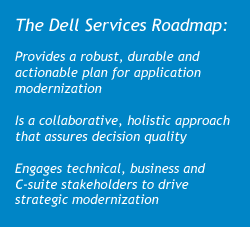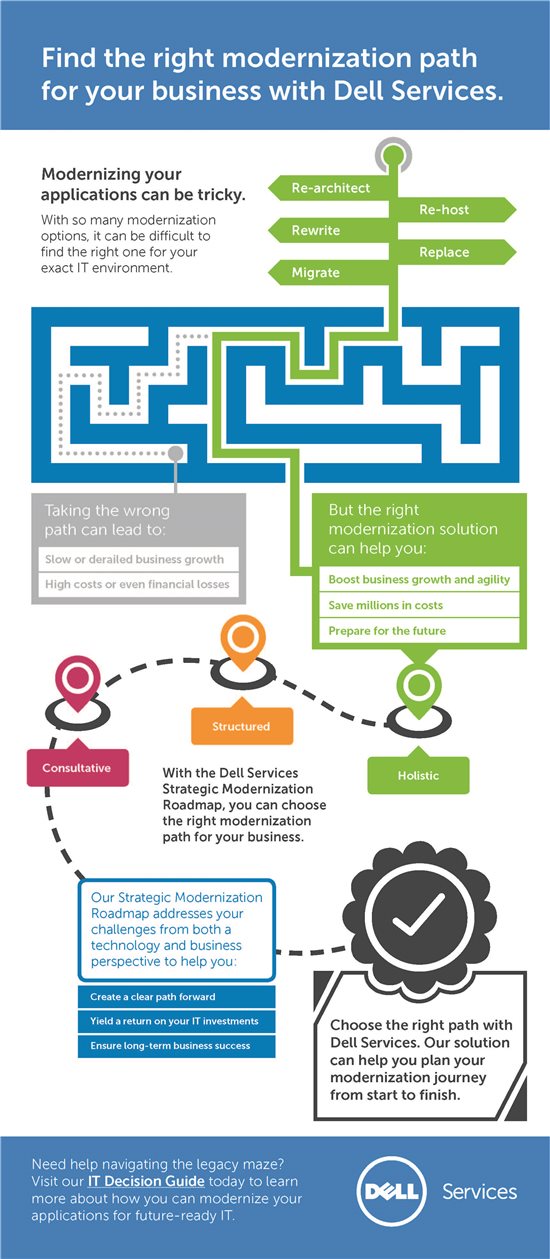It’s hard to imagine launching the 1945 invasion of Normandy without a plan. Even General Eisenhower, who famously found plans useless once in battle, believed that “planning is indispensable.” I am still surprised when I watch major enterprises take on legacy modernization with little understanding of their legacy assets, and even lesser practical plans. Sure, picking apart legacy systems is daunting without the right tools and experience, but we’ve spent ten years closing that gap with patented tools and fit-to-purpose methodologies.
When a leading retailer needed to move their homegrown legacy ERP application to SAP, they discovered their application was so complex, fragile and intertwined they didn’t know where to start. The business leaders knew which SAP modules they wanted first, but IT couldn’t identify the relevant legacy software and data, nor the integration requirements between SAP and the legacy system. They needed an expert to help build a realistic and incremental plan.
Dell Services stepped in and captured a holistic semantic model of their system. We say “holistic” because the model considered the application in its entirety, with its semantics, business use, and strategic context. Our model enabled us to easily determine:
- Which legacy logic and data would need to be migrated to inform implementation of a strategic SAP module
- Which legacy assets should be migrated together because of tight dependencies, and
- Exactly what integrations SAP would need from the legacy at that stage of the program.
With a model in hand, we considered hundreds of alternative plans to speed time-to-strategic-value while minimizing integration effort. Having the right model meant that we could collaborate effectively with the business and technical teams to plan an actionable and robust roadmap.
Another customer, a major healthcare plan, had created four versions of their legacy claims application for each of their lines of business. With complexity spiraling out of control, they asked us to build a plan to consolidate the versions and bring the proven logic into a new, agile system. The same legacy analysis and modeling approach enabled us to identify both the physical differences in the code of the versions and describe the business use of those components. The customer is proceeding with consolidation, armed with a detailed plan.
In both cases, the detailed and robust planning — or roadmap — saved the customer several pitfalls and ensured they met their business objectives. These customers, like so many others, couldn’t break the planning log-jam on their own. Enterprise IT shops typically neither need nor have the tools and skillsets for this kind of analysis, any more than I have a full-time mechanic for my car. And yet I need expert help when my car doesn’t start.
 Dell’s Strategic Modernization Roadmap (SMR) team has that expertise, with consulting and technical skills, the experience of having worked with hundreds of legacy systems, and the tools to accelerate key tasks. We also offer an important perspective technology consultants often miss: we are always working to solve business problems and enable business opportunities.
Dell’s Strategic Modernization Roadmap (SMR) team has that expertise, with consulting and technical skills, the experience of having worked with hundreds of legacy systems, and the tools to accelerate key tasks. We also offer an important perspective technology consultants often miss: we are always working to solve business problems and enable business opportunities.
The Dell Services SMR approach is holistic and collaborative for application modernization projects. The result defines an actionable plan for customers who need help with their modernization journey, or already have a clear modernization goal, but need help to chart the way forward by combining both technical and strategic analysis to help drive the modernization project. Often, we see modernization programs are driven by technical teams to resolve technical or infrastructure-related objectives without any input or insight from business teams. The downfall with a single-track view is not only myopic, serving limited purposes for a limited time, but also it can prove to be a wrong decision in the long run. In some instances, we’ve seen customers opting for a re-host or automated code conversion, whereas an application re-architecture or re-write would’ve been a better long-term and cost-effective solution for the business. That’s why it’s critical for companies to get a holistic view of their modernization project first, and then have a robust plan to achieve their objective.
The three key components of SMR include a 1) discovery phase, an 2) analysis phase and a 3) planning phase.
The discovery phase captures and links strategic drivers, business capabilities, code and data in a unified, holistic model. The phase typically includes:
- Interviews with strategic stakeholders
- Video walkthroughs with business users
- Automated cataloging and parsing source code and data structures
- Automated duplicate and missing asset detection
- Automated dependency detection among programs, modules, and applications
The analysis phase maps automated analysis tools to the business scenario, confirms the preferred modernization trajectories, including re-host, re-architect, recode, migrate, retire or replace with custom, off-the-shelf applications or a combination of either trajectories and derive asset groups and relevant dependencies across the application environment.
The third phase is the planning phase where we work collaboratively with the technical and business teams to develop a program plan that addresses strategic business drivers and resolves technical challenges. The engaging of all strategic stakeholders ensures decision quality and reaffirms the right trajectory.
- To know more, download the Dell Services Strategic Modernization Roadmap white paper.
- Need modernization, but don’t know where to start? Click on the Modernization IT Decision Guide.
- View the Infographic that explains the benefits of Strategic Modernization Roadmap.

